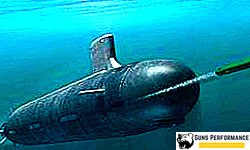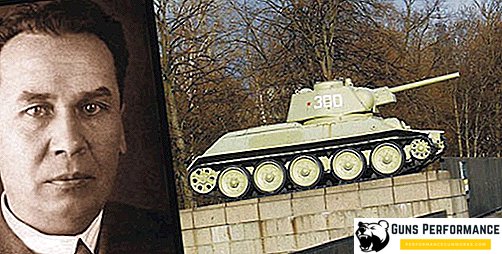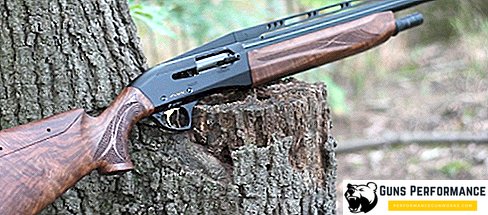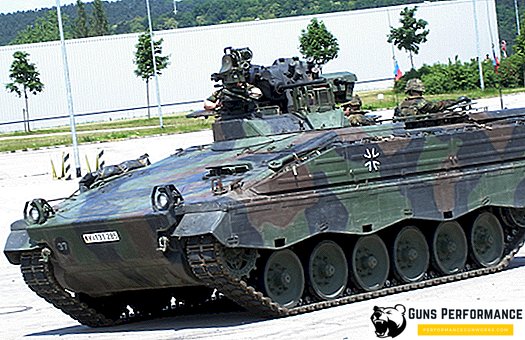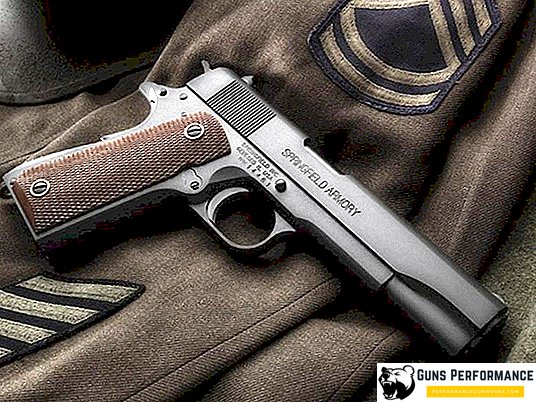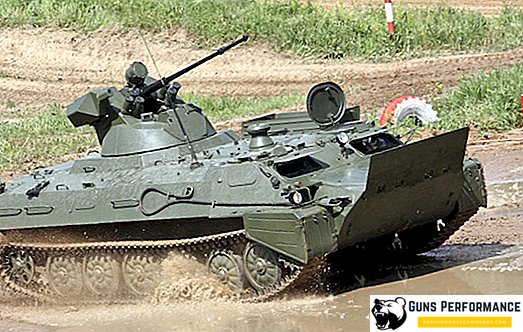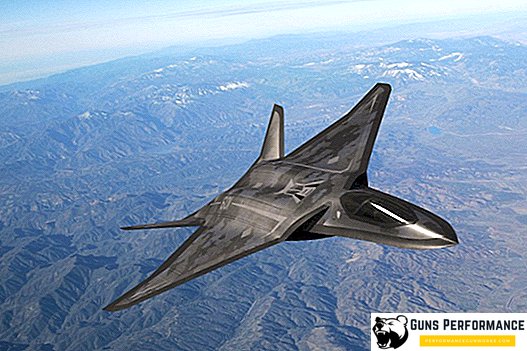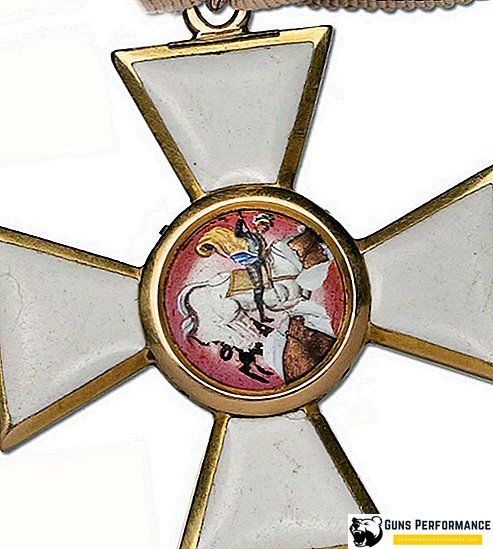Machine gun NSV "Rock" - the Soviet heavy machine gun (caliber - 12.7). Its main objectives were:
- firing points, lightly armored ground targets;
- targets that are behind small shelters at a distance of up to 1000 m, including congestion of transport and infantry at a distance of up to 1500 m;
- low-flying air targets at altitudes up to 1500 m.
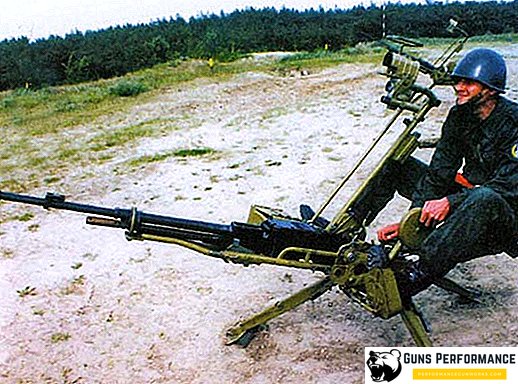
The gunner NSV uses a very powerful large-caliber cartridge 12.7 x108, which is equipped with bullets for various purposes:
- armor-piercing incendiary B-32;
- armor-piercing, incendiary tracer BZT-44;
- incendiary-instant action MDZ.
History of creation
Heavy machine gun NSV was created in the 1960-1970s in the Tula TsKIB SOO with the aim of replacing the heavy and outdated DShK (DShKM). Machine gun NSV was named after the initial letters of the names of the developers - Nikitin, Sokolov and Volkov. A little earlier, the same team took part in the competition to create a single machine gun to a caliber of 7.62 mm, but the sample of M. Kalashnikov was the winning one.

It was decided to create a new Metallist plant in Uralsk for the production of NSV, since the production in Kovrov at the Degtyarev plant was overloaded. In the development of the "Cliff", new and original technologies of Allied research institutes were used, most of which were not used in the manufacture of weapons before:
- electrochemical treatment was used to obtain rifling;
- for thermal tempering a vacuum tempering system is involved;
- To increase barrel survivability, jet chrome plating technology was used.
In the process of regular testing and debugging of production, the factory designers made many changes to the design of the machine gun, mainly aimed at increasing the reliability of operation and survivability of the weapon, as well as at simplifying the design of the "Rock".

Large-caliber machine gun "Rock", except for the USSR produced at plants in India, Bulgaria and Poland. Production in these countries was transferred along with a license for the manufacture of T-72 tanks. In addition to these countries, Iran has also received a license, but there is no reliable information about its mastering of the production of the "Cliff".
Combat use
The cliff received the first combat "baptism" in Afghanistan. At first, on both sides, only modifications of the DShK took part in the hostilities (the Mujahideen used Chinese-made models). However, after the second half of the 1980s, the NSV machine gun also began to enter the army. He was quickly appreciated for his dignity, his main feature was the ability to carry out aimed fire at the enemy outside the effective range of automatic firing. Initially used easel machine gun, and then its variants, mounted on armored vehicles.
The NSV machine gun is well-established as an anti-aircraft machine gun on almost all Soviet tanks, from T-64, SAU, as well as various types of armored vehicles. At the navy, "Rock" was used as a means of ship defense.

Not less "favorite" machine gun NSV was in the course of both Chechen campaigns. In Chechnya, he got the nickname "anti-sniper". The inconspicuous, firing range of up to 2 km together with a special sight made the NSV machine gun an effective means of countering enemy snipers. His combat capabilities increased significantly when the machine gun was equipped with new types of sights:
- optical SPP;
- night illumination NSPU-3;
- radar sight.
By the end of the 1980s, the potential of the "Cliff" was almost exhausted, but it is still in service. He was replaced by a heavy machine gun "Kord", which was developed in the design bureau of the plant. Degtyareva city Kovrov.

Performance characteristics
- Chuck - 12.7 x 108 mm.
- Weight without tape - 25 kg.
- Barrel weight - 9 kg.
- Weight curb tape, designed for 50 rounds - 7.7 kg.
- The weight of the cartridge box, designed for 50 rounds - 11.1 kg.
- The mass of the cartridge - 123-137 g.
- The length of the machine gun - 1560 mm.
- The length of the machine gun with electrofan - 1610 mm.
- The length of the machine gun NSV on the machine 6T7 - 1900 mm.
- The height of the gunner NSV on the machine 6T7 - 380 mm.
- The number of grooves - 8.
- The initial speed of the bullet - 845 m / s.
- Muzzle energy of a bullet - 15815-17672 J.
- Fire mode - continuous.
- Rate of fire - 700-800 shots / min.
- Combat rate of fire - 80-100 shots / min.
- Sighting range - 2000 m.
- The direct shot range at a height of 2 m is 850 m.
- The thickness of the pierced armor at a distance of 500 m - 16 mm.
- Ribbon capacity: tank version - 150 rounds, infantry variant - 50 rounds.

Design features
The NSV machine gun was an order of magnitude lighter than its predecessor (DShK), and for a machine gun of this caliber, a weight of 25 kg is still the lower limit, even with modern technologies. Automation "Cliffs" is based on the principle of removal of powder gases, wedge locking of the barrel is applied with a shift to the left, while the bolt's earring hits the striker.
- The trigger mechanism is very simple, it is assembled in a separate box and allows only automatic firing. The trigger mechanism is not intended for direct control of the fire on a machine gun, you must have a trigger and handle or electrostatus on installations or machine. There is also no reloading handle, the force of spring charging is very high, which requires for its reduction the presence of various block or lever designs.
- The design used the original elements, moving parts to reduce friction provided with rollers. The cadmium coating served as an additional “lubricant”, the quick-detachable wedge closing device made it possible to replace the barrel without performing adjustment after the shift — simple disassembly and assembly.
- The bolt with the bolt carrier, as well as the bolt carrier itself, is connected to the hinged piston together with the vapor-withdrawing piston. The filing of cartridges with the help of a metal tape could be left- or right-handed. Return spring includes buffer. Coupled with the release of sleeves forward, it allowed to combine in the twin installations "right" - "left" machine guns. In particular, one of such installations for the armament of boats was manufactured by the machine-building plant named after M.A. Ryabikov in Tula.
- The mechanical sight had an aiming bar, which is marked up for firing up to 2000 m, as well as a front sight. Initially, the front sight was folding, but the subsequent disassembly of the fighting showed that there was not much point in such a design.
- The power of the machine gun was carried out from a metal link band with a link like "crab". Detachable tape consisted of pieces of 10 links. The extreme link did not have a T-shaped extension, which made it possible to join individual pieces into a continuous tape of the desired length. A white distinctive strip was applied along the longitudinal edge outside the connecting link, which indicated which link allowed the tape to be separated.
- The barrel of the machine gun is quick-detachable,On himthere is a handle. The muzzle of the trunk is equipped with a conical flame arrester.
- In the infantry version of the "cliff" is used on the tripod machine 6T7. The machine version provides good adaptability to the position and firing from different positions. The machine is equipped with a trigger for controlling the fire, trigger guard and trigger, as well as a spring-loaded shoulder rest. The design of the Stepanov-Baryshev machine does not provide for the possibility of anti-aircraft firing. Due to this, the weight of the machine is only 18 kg. For transportation, the machine gun is removed from the machine, and the machine is folded up and can be carried on the shoulder straps.

Modifications
The main modification of the "Cliff" was the tank gun NSVT on T-72, T-80, T-90, as well as later modifications of the T-64 tank and on self-propelled artillery installations and various armored vehicles. On the basis of the machine gun developed ship's turret-tower installation "Rock-M".
In the 1990s, several thousand combat vehicles of the Sisu NA-110 and Panssari-Sisu armored personnel carriers produced in Finland for their own army and military units operating in African countries under the auspices of the United Nations were armed with machine guns.

Tank version of the machine gun supplied electrically, which was a primitive coil with a rod. It was attached to the rear of the receiver, while the current was applied, the rod moved out, exerting pressure on the trigger shaft.
Machine Gun Video
After the separation of Kazakhstan, the main producers of the machine gun "Utes" remained in the territory of this country. For some time Russia bought NSV machine guns in Kazakhstan due to the lack of its own analogues. However, with the establishment of the production of a new large-caliber machine gun "CORD", it was decided to abandon the purchase of an already outdated machine gun. The machine gun "CORD" has an order of magnitude better characteristics, but at the same time the universality and reliability of the "Cliff" was preserved. Unchanged remained ballistics and landing dimensions for compatibility with existing machines and installations. At the same time, almost the entire design of the machine gun has undergone significant modernization and alteration.


